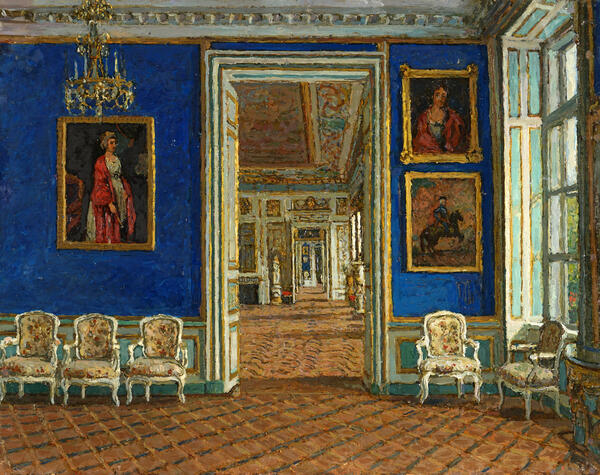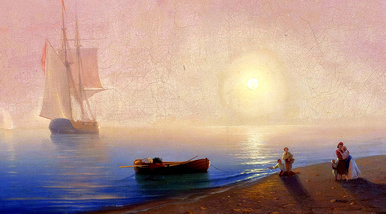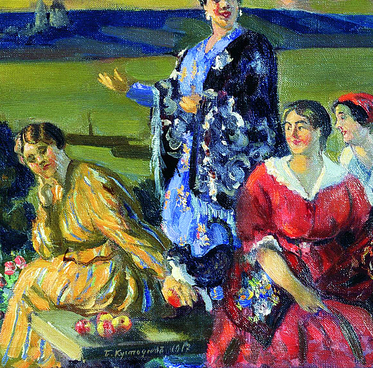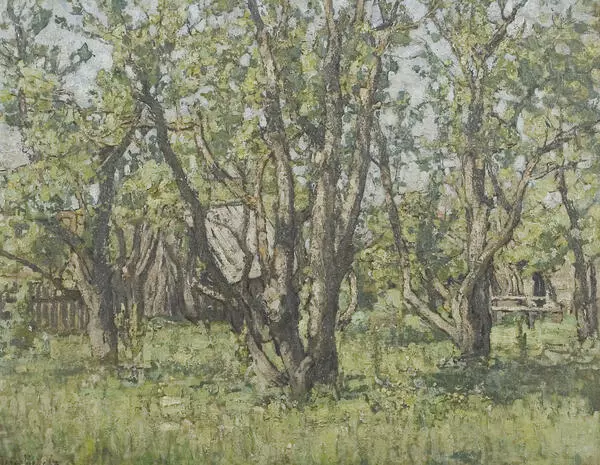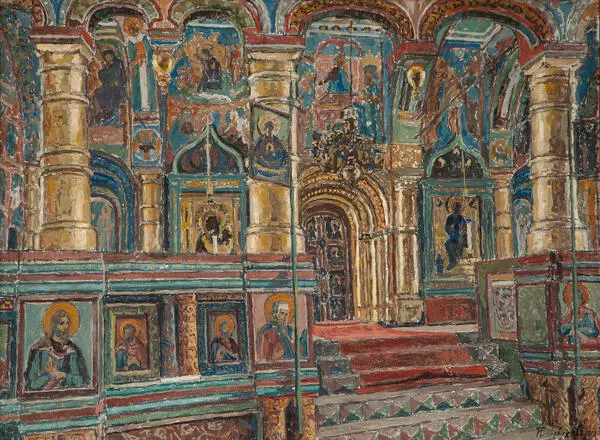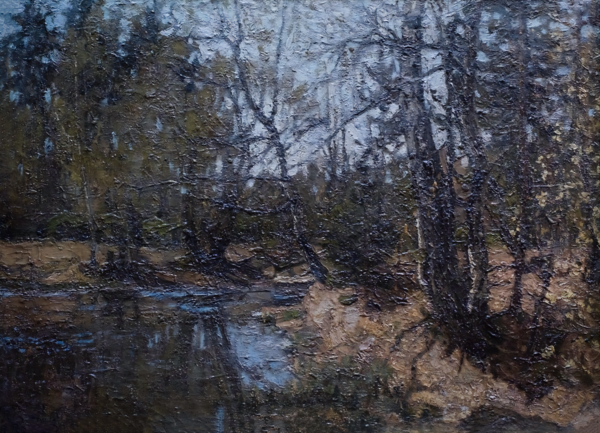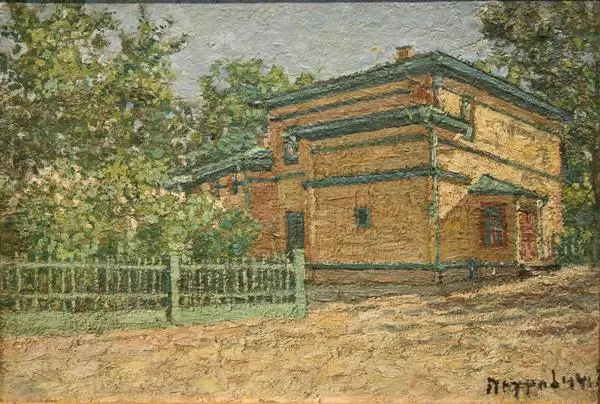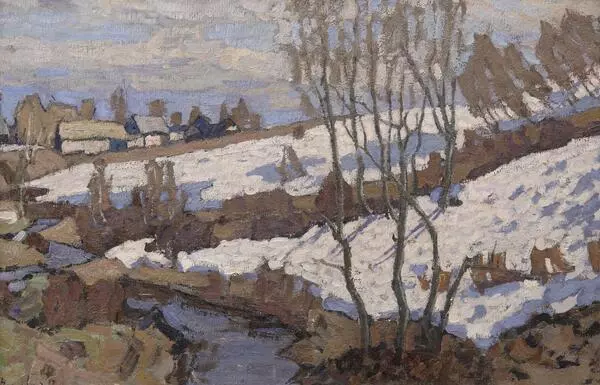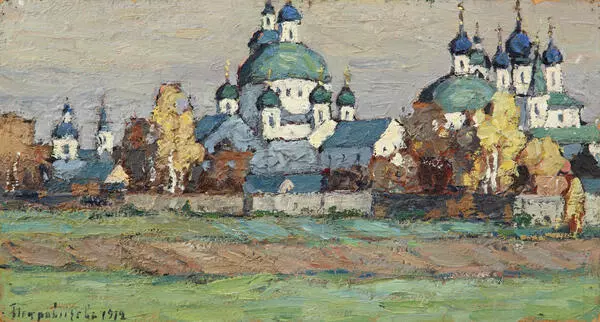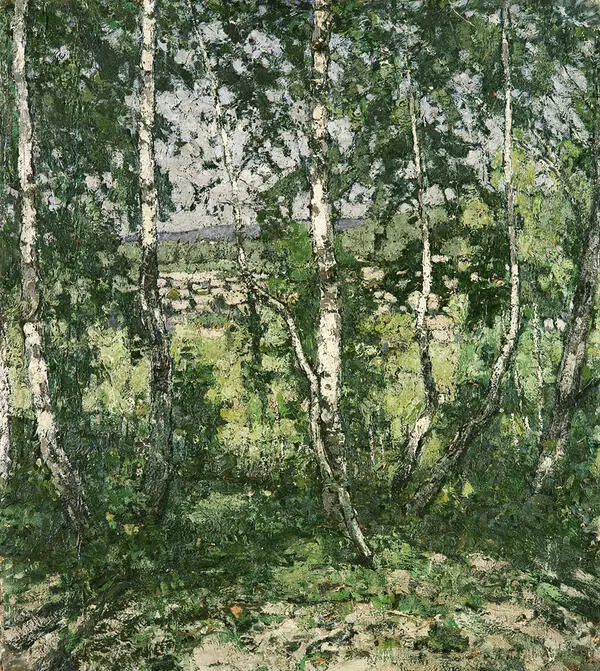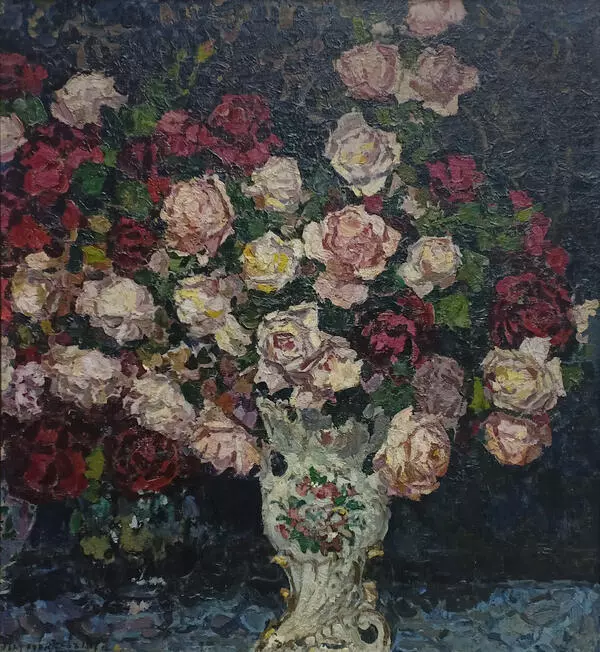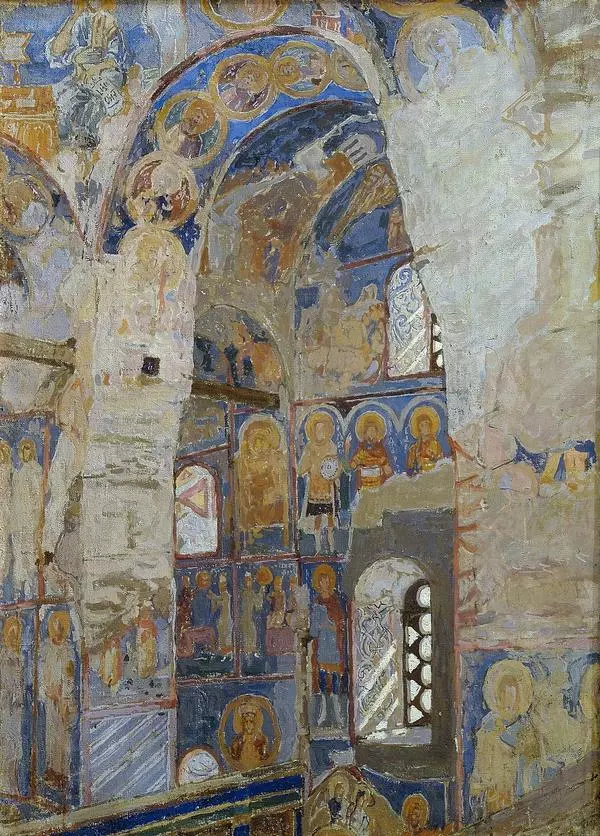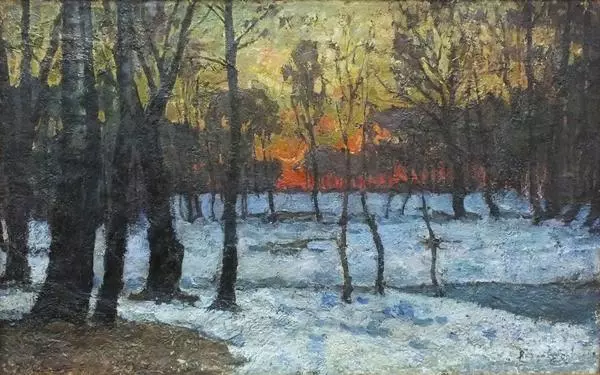Petr Petrovichev was born in 1879 in the village of Vysokovo, Rostov district. At an early age he showed early drawing abilities, but he did not have the opportunity to develop them immediately. He came from a poor peasant family, and only at the age of 14 his father was able to send him to study as an icon painter in Rostov. There was no place in the workshops for the young man, but he got a job as an apprentice of the restorer at the Rostov Museum of Church Antiquities. Here, Petrovichev acquired his first skills. In the Rostov Museum, he met with Vasily Vereshchagin. This experienced painter advised the young man to get a professional art education, and later helped to settle in Moscow.
In 1892, Petr Petrovichev entered the Moscow School of Painting, Sculpture and Architecture where he studied in a landscape class of Isaac Levitan. Petrovichev often painted landscapes, but the architectural panoramas of ancient Russian cities and the interiors of churches and palaces were what brought him fame.
Interior as an independent genre originated in the 17th century in Dutch painting. The Chelyabinsk State Museum of Fine Arts houses the interior painting ‘Kuskovo’ by Petr Petrovichev. The palace of Kuskovo was the main building in the country estate of Count Petr Sheremetev. It was built in 1769–1775. The interiors were created by invited foreign artists, sculptors, carvers, as well as Russian free and serf peasant masters.
In summer, ceremonial receptions were held in the palace. The interior decoration has been completely preserved up to the present time: plank floors, stoves, fireplaces, stucco moldings, mirrors and lighting fixtures.
While still being a student, under the guidance of Isaac Levitan, Petrovichev painted several sketches and landscapes at Kuskovo. Later, when the palace was turned into a museum and opened to the general public, the artist often painted there from life. He created panoramas of the ensemble with a palace, a church, outbuildings and a pond, captured fragments of manor buildings and cozy corners of the park. Petrovichev not only conveyed the appearance of the interiors, but also the impressions from them. In one of the interior paintings, the sun’s rays shine joyfully, while in the other one, soft lighting creates a mood of peace and quiet. All this is achieved by a special “Petrovichev” painting technique i.e. painting in small, precise strokes.
In 1892, Petr Petrovichev entered the Moscow School of Painting, Sculpture and Architecture where he studied in a landscape class of Isaac Levitan. Petrovichev often painted landscapes, but the architectural panoramas of ancient Russian cities and the interiors of churches and palaces were what brought him fame.
Interior as an independent genre originated in the 17th century in Dutch painting. The Chelyabinsk State Museum of Fine Arts houses the interior painting ‘Kuskovo’ by Petr Petrovichev. The palace of Kuskovo was the main building in the country estate of Count Petr Sheremetev. It was built in 1769–1775. The interiors were created by invited foreign artists, sculptors, carvers, as well as Russian free and serf peasant masters.
In summer, ceremonial receptions were held in the palace. The interior decoration has been completely preserved up to the present time: plank floors, stoves, fireplaces, stucco moldings, mirrors and lighting fixtures.
While still being a student, under the guidance of Isaac Levitan, Petrovichev painted several sketches and landscapes at Kuskovo. Later, when the palace was turned into a museum and opened to the general public, the artist often painted there from life. He created panoramas of the ensemble with a palace, a church, outbuildings and a pond, captured fragments of manor buildings and cozy corners of the park. Petrovichev not only conveyed the appearance of the interiors, but also the impressions from them. In one of the interior paintings, the sun’s rays shine joyfully, while in the other one, soft lighting creates a mood of peace and quiet. All this is achieved by a special “Petrovichev” painting technique i.e. painting in small, precise strokes.

